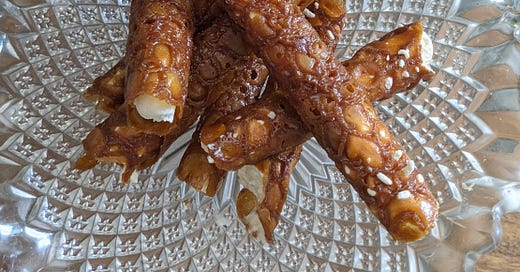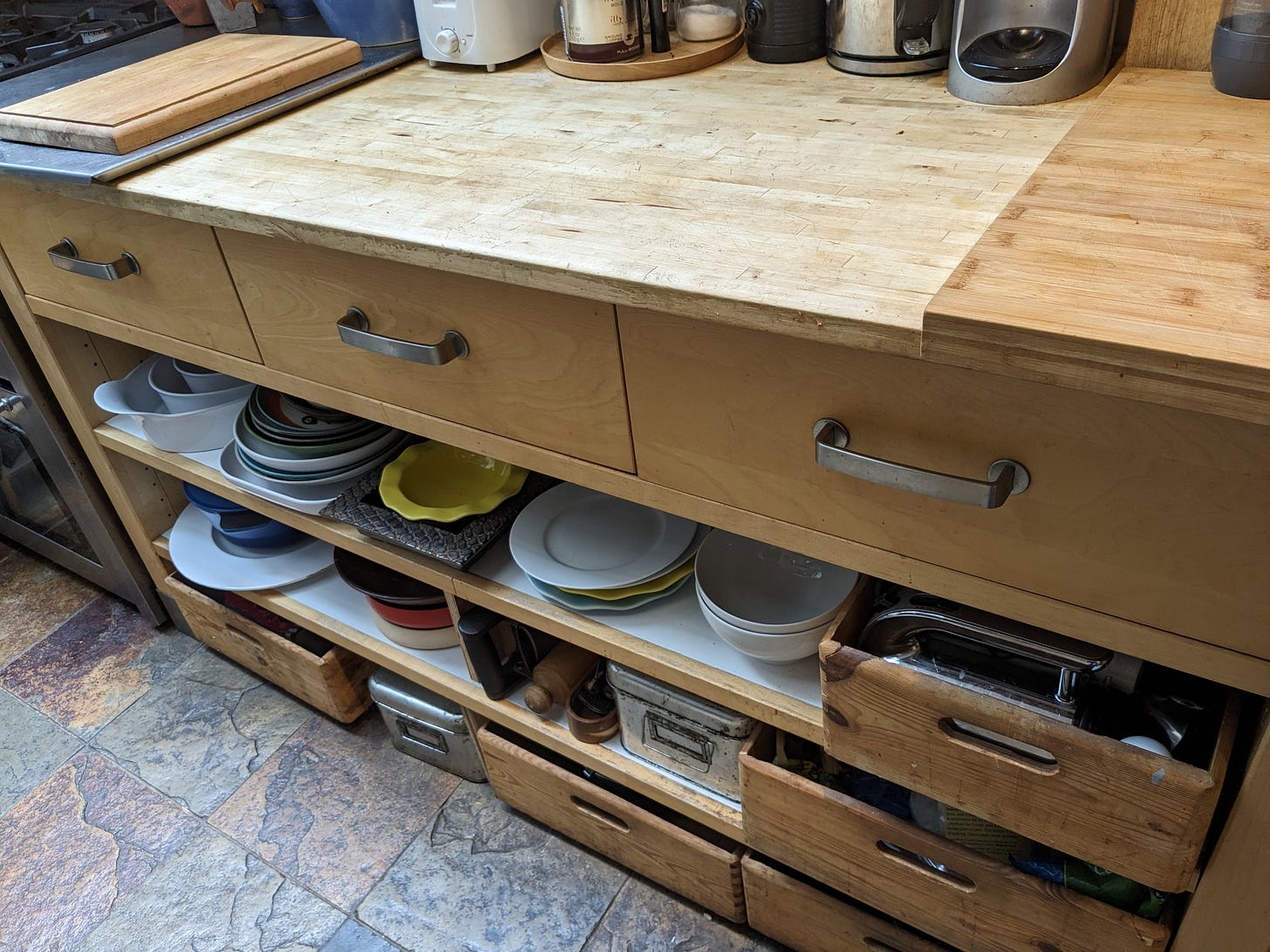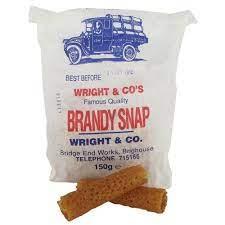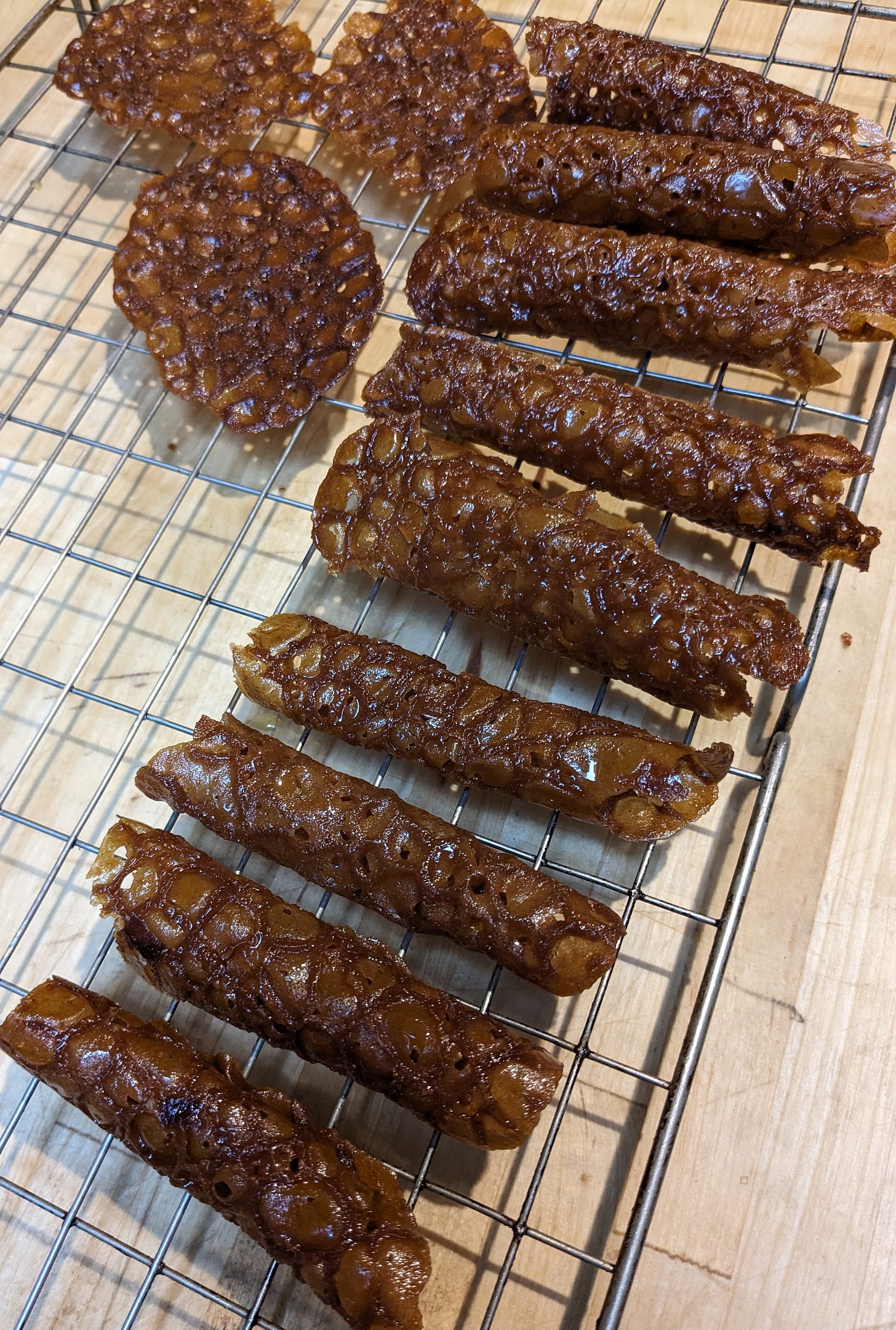There are houses you walk into and know at once the year of the Crate & Barrel catalogue from which its furniture was bought. My kitchen is IKEA circa 2000 – remember the free-standing Varda range?
Food is the same. There was a time when every dinner party ended with a chocolate mousse, or rather, if both pudding and host were brandy-infused, ‘mousse au chocolat’. I haven’t eaten one in years. And when was the last time you saw zabaglione on a menu? Crème brûlée, on the other hand, never seems to go away, just fade a little for a couple of seasons.
For several years when I was growing up, a dinner party finale in my mother’s arsenal was brandy snaps. These looked like cannoli, those Italian cylinders of fried dough stuffed with ricotta and veering on the ballast side, to which I am not in the least bit partial. Brandy snaps are baked not fried, paper-thin not pancake-thick, a cookie not a dough, filled with flighty whipped cream not sensible ricotta.
Brandy has nothing to do with them – unless you infuse the cream with it. The name alludes to the Victorian description ‘branded’, to describe their burnt look when they emerge from the oven.
Given the Brits are generally associated with stodgy puddings like steamed treacle sponge, jam roly poly, trifle and Spotted Dick (No. Google it), it’s a surprise to discover that delicate brandy snaps come from Yorkshire, that plain-talking, no-nonsense county almost top right hand side of England, home to the Yorkshire pudding. It’s claimed they originated as far back as 1279, sold at the fair at Wyke, the Yorkshire town now known as Hull, a fair set up for the sale of horses, cattle and foreign imports.
That’s not improbable. Ginger, a key ingredient, was well known in England by the 11th century AD. The rhizome has an impressive history, one of the first spices to have been exported along the spice trade route to Europe and used by the Ancient Greeks and Romans. It is possibly the first genetically modified plant known, a cultigen resulting from artificial selection, deliberately altered as far back as 1500 BC by the Austronesian peoples of Southeast Asia. By the 1st century AD, it had been introduced into the Mediterranean region by traders from India and China. These days, India still provides 32 percent of the world’s annual 2.8 million tonnes.
You can easily grow ginger yourself. Buy a fresh root with a pearly sheen in a supermarket, break off a piece from which protrudes a little lumpy knob and plant it into potting compost in a flowerpot. It’s not fond of the cold and wet so keep it indoors while long slender leaves like those of a Siberian iris grow. In 8 to 10 months, you will have a fully grown plant around 1.5 metres tall that you could admire as a lyrical houseplant or dig up for the tuber that will have developed.
It’s the dried root powder that is used to make brandy snaps. Initially, these were sold as flat cookies and only later were wrapped around a thick wooden spoon handle to form a cylinder, or a tangerine to make a basket shape to fill with whipped cream. In the 1960s, along with candy floss (cotton candy), toffee apples, nougat and doughnuts, unfilled brandy snaps were a staple at county fairs and fairgrounds across the country. Wright & Co of Brighouse in Yorkshire were the main suppliers, selling them in bags or boxes – as they still do today.
My mother was a Yorkshirewoman, so they would have been familiar to her from her own childhood as she introduced them to mine.
The recipe is made from a mixture of golden syrup, flour, ground ginger, sugar and butter, the brandy snaps being baked to a thin amber disc that is rolled up whilst still soft. You have to be super swift over their assembly. It’s tricky to begin with but once you get the hang of it, they are easily made. As soon as they are cooked, and have had a minute to cool only enough not to burn you when you work with them, they’re quickly wrapped round the oiled handle of a thick wooden spoon or a thin rolling pin, to form a cylinder which is then slid off and onto a baking rack to cool.
The sweet ingredient in brandy snaps is golden syrup, invented in 1881 by London chemists Charles and John Eastick for Abram Lyle, a Scottish politician and food manufacturer who founded a sugar refinery. In 1921, it merged with the company of his rival sugar merchant Henry Tate to become Tate & Lyle, the Tate behind Tate Modern and Tate Britain, the London art galleries.
Golden syrup is a liquid inverted sugar syrup made by processing and refining sugar cane or sugar beets then treating the resulting solution with acid so that it doesn’t crystalise when exposed to heat. Its closest equivalent in the US is light treacle but brown rice syrup or light molasses will substitute. Others, such as maple syrup, honey, or dreaded high fructose corn syrup emphatically will not.
55g/2oz butter
55g/2oz demerara sugar
55g/2oz golden syrup. Tip: Once you’ve measured your sugar, add another 55g/2oz weight to your scales then pour the golden syrup over the sugar to slide easily into the cooking pan.
50g/1¾oz plain flour
1 level teaspoon ground ginger
Double/heavy cream to whip into soft peaks for filling the brandy snaps
Preheat the oven to 180C/350F.
Line a baking tray with baking parchment then oil the thickish handle of a wooden spoon.
Add the butter, sugar and syrup to a small pan. Heat over low heat until the butter has melted and the sugar completely dissolved, about 15 minutes, stirring frequently. Don’t let the mixture boil or the sugar could crystallise.
Leave the mixture to cool slightly, about 2 minutes, then sieve in the flour and ginger. Stir to mix thoroughly. Drop four teaspoonfuls of the mixture onto the baking tray 10cm/4in apart. They will really spread!
Bake about 8 minutes. Remove the tray from the oven and leave for a minute or so to firm up slightly, then, if you have asbestos fingers, carefully peel a brandy snap away or lift it from the baking parchment using a fish slice. The mixture needs to be just firm enough to remove, but pliable enough to shape.
Quickly press the snap around the handle of the wooden spoon with the join underneath. Press it together to seal, then slide the brandy snap off the spoon onto a rack to cook, keeping the join underneath. If any of the circles on the sheet have hardened, put them back into oven and count to 10.
Repeat until all the mixture has been used. To stop the mixture in the pan firming up, put the pan in the oven or in the unlit upper oven if you have one while you work on your four snaps. Remember to take it out again USING AN OVEN GLOVE.
Once cold, store in an airtight tin or container where they will keep for at least a week. Only stuff them with whipped cream just before you are about to serve them so the brandy snaps stay crisp.










Goodness! How nice to be reminded of brandy snaps. A childhood favourite. I had no idea brandy had nothing to do with them. Fascinating!
One question: if Golden Syrup was invented in 1881, how were brandy snaps made as far back as 1279?